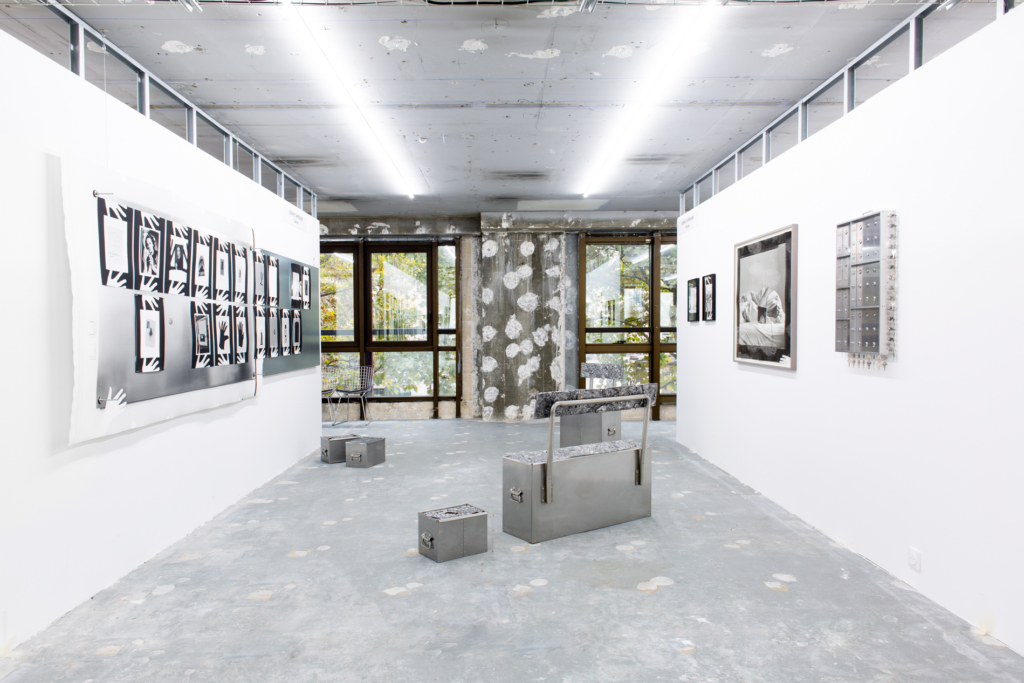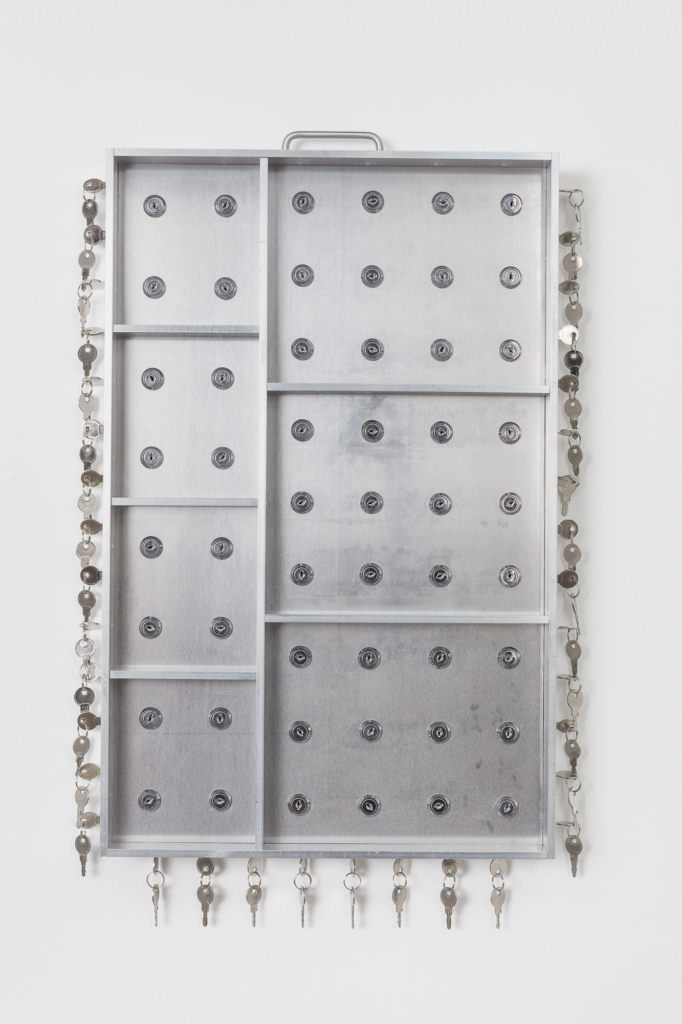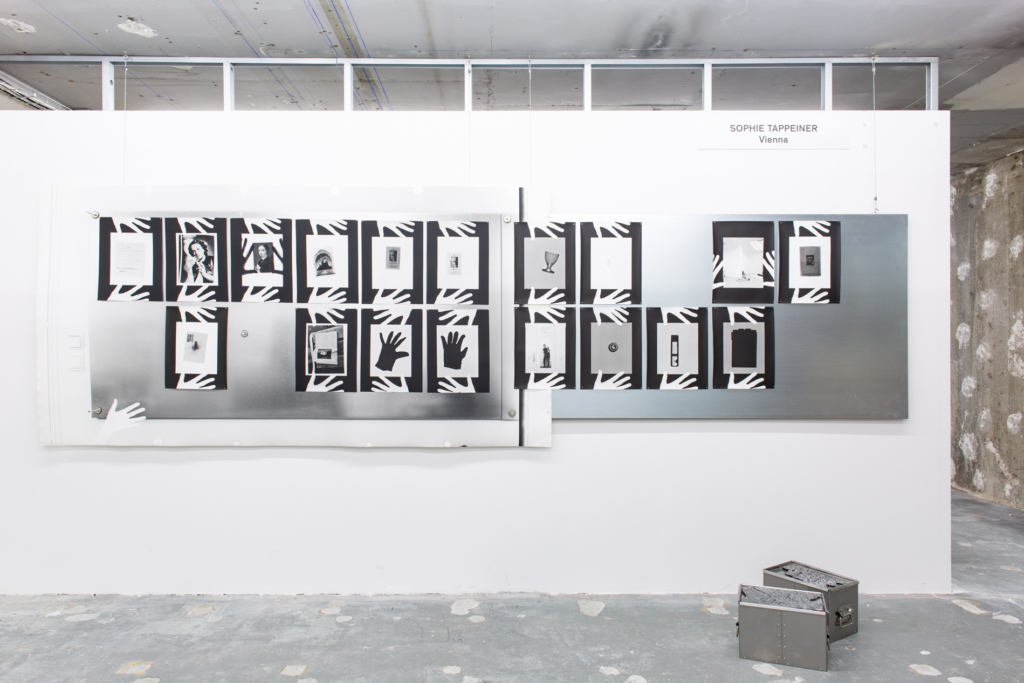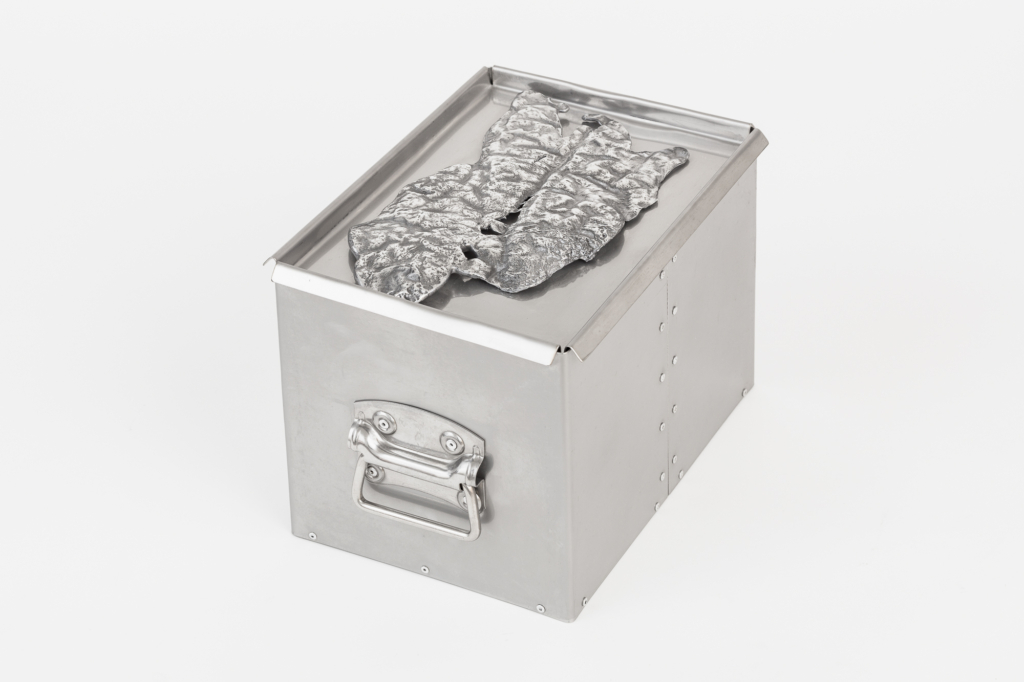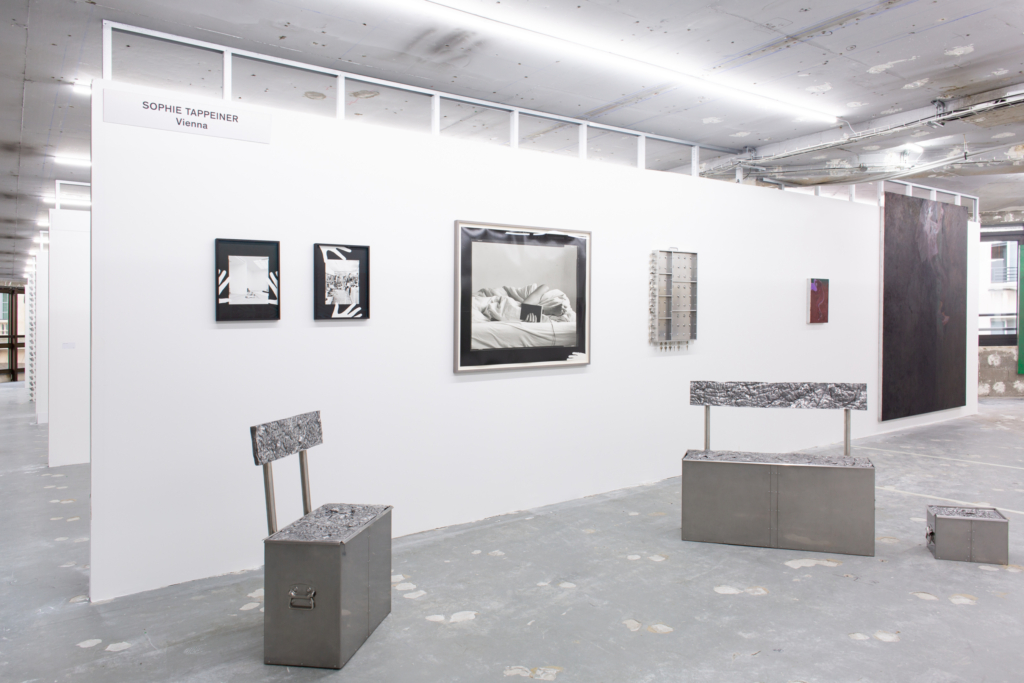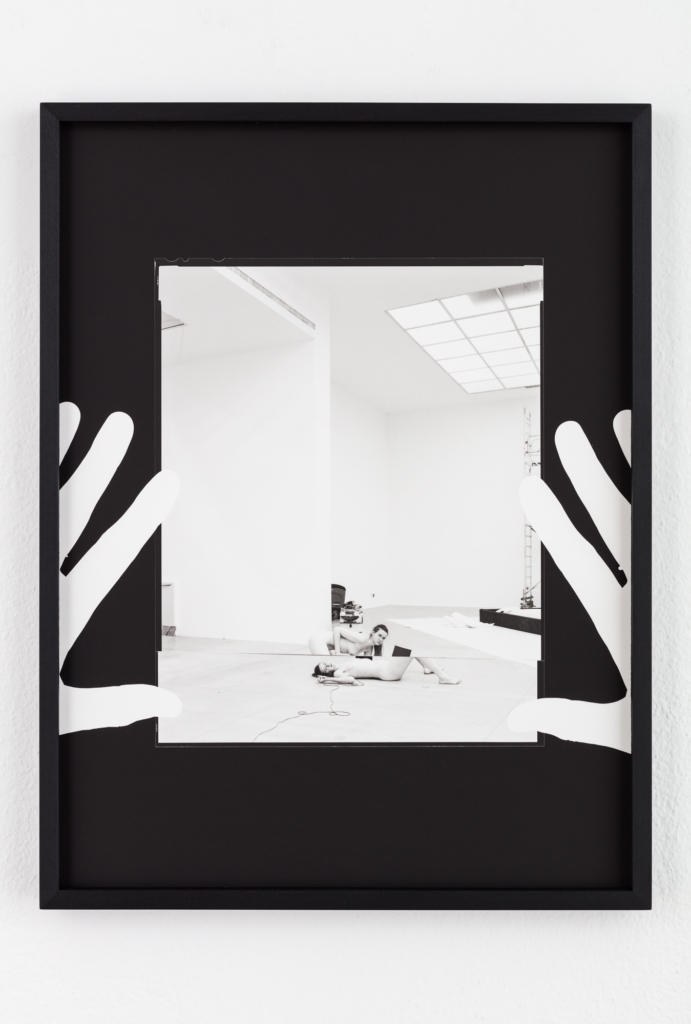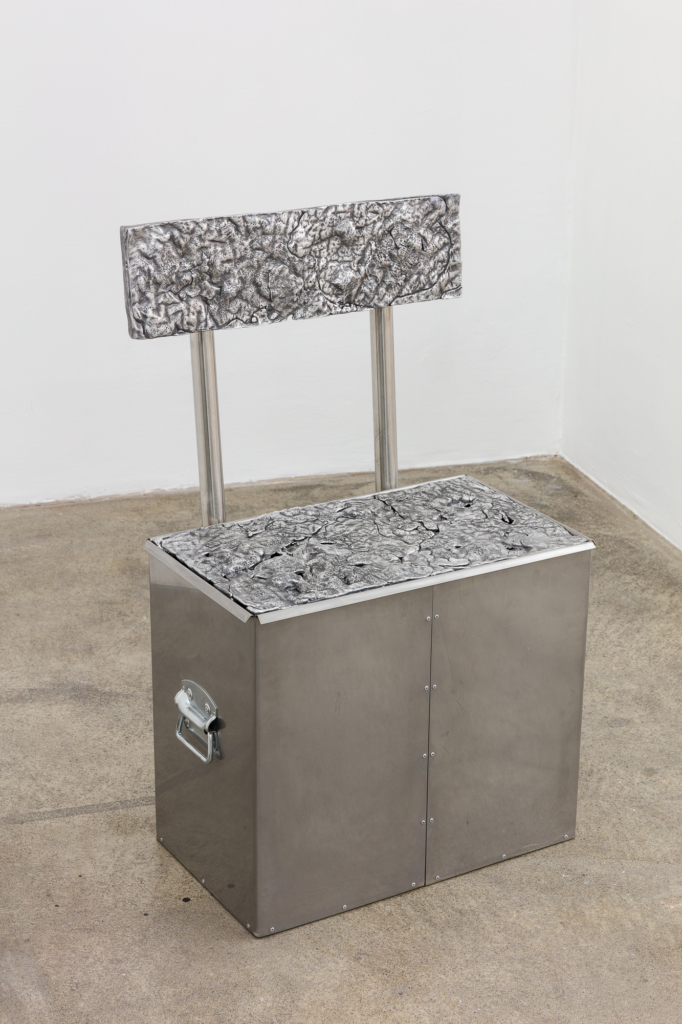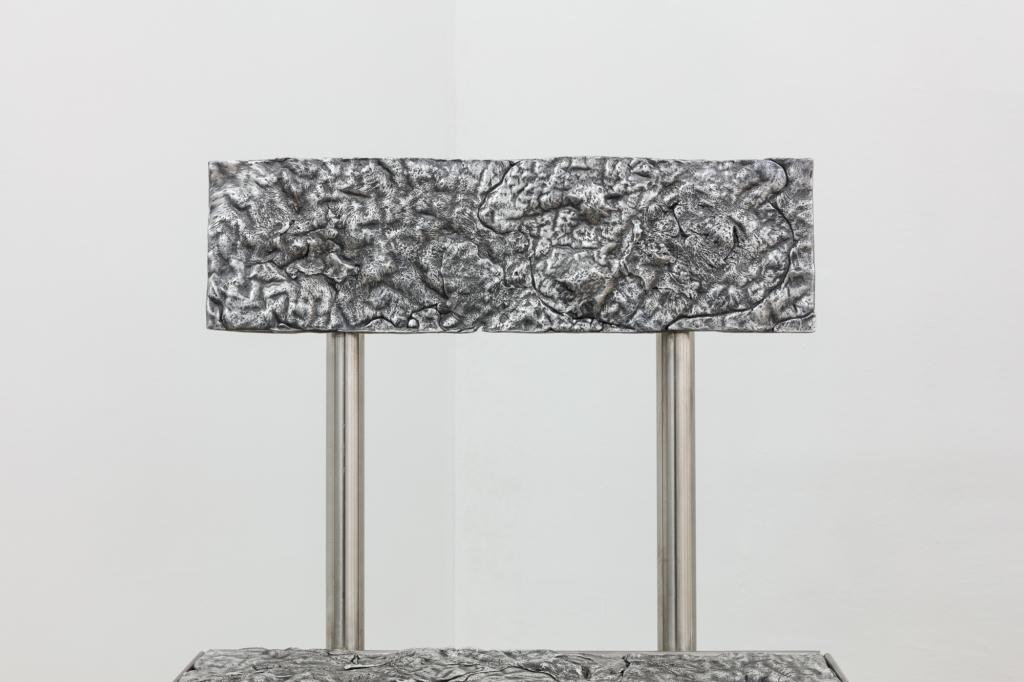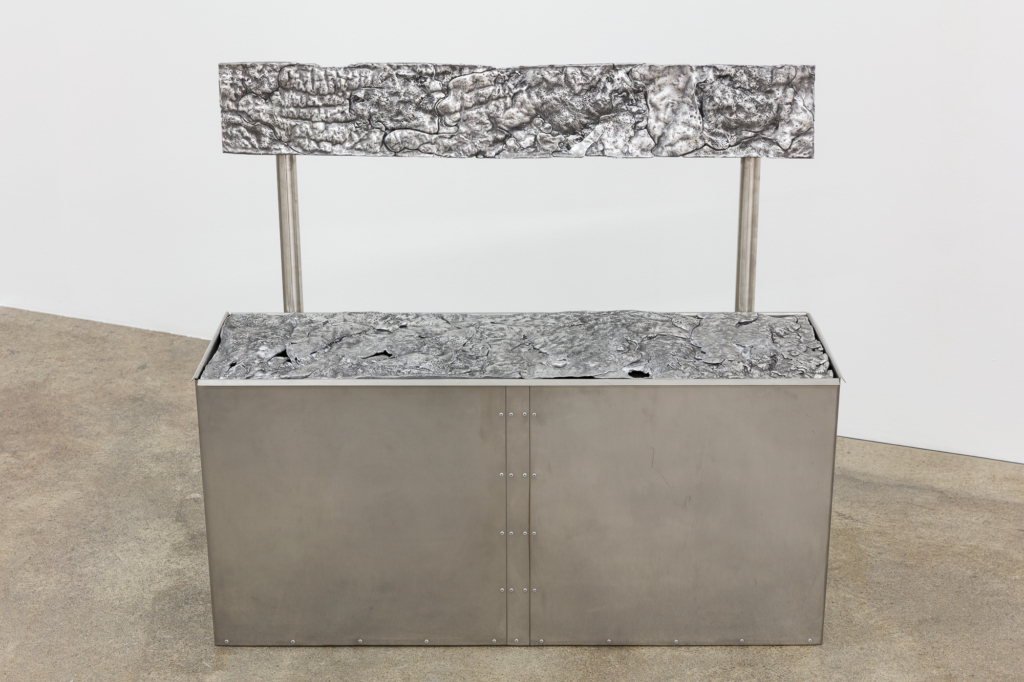For Paris Internationale, the gallery’s presentation suggests a dialogue between the sculptural work of Irina Lotarevich and photographic oeuvre of Sophie Thun.
Lotarevich’s practice is shaped by the intersection of her own subjective experience with larger systems. The minimal yet complex and specific forms of her sculptures reference architecture, bureaucracy, labour, and parts of her body. The wall sculpture is made of a drawer-like aluminum form filled with locks and keys dangling from the sides). The sheer quantity and repetition of locks, divided into neat rectilinear compartments, evokes an obsessive mindset, while the drawer-like form also doubles as a plan of an apartment or city. The keys can be turned, but the locks don’t actually open anything; we face an exterior barricaded by locks that don’t offer access (to any interior). As the title Housing Anxiety suggests, the work could also refer to the precarity of navigating constantly shifting and unstable housing situations.
The floor-based metal works presented here are based upon functional storage boxes. The aluminium surfaces of these handmade objects are imprinted with an enlarged cast of the artist’s skin. With these works, Lotarevich explores ideas of compartmentalisation and the notion of the box becoming a parallel for the self, in its capacity as a vessel or container. With the skin’s imprint, the walls of box come to represent borders between an outer, social world and the inner, psychic life. The latter, containing thoughts, memories, desires and traumas, is gathered into archival bodies that may be moved, stored or unpacked.
Thun works primarily with techniques of analogue photography, referring the spaces and processes that define its production and exhibition. The dialectical interrelations between the scene of production and the work’s presentation, between the setting of the artist’s labour and the physical presence of the body, are recurrent themes in Thun’s practice. Her hands, which hold the negatives while exposing them, consistently form the frames to her photographs. Their white imprints – photograms – are both markers of her authorship and indices of the mechanical process of print production. Moreover, the artist poses for herself in most of the photographs. Her own body is always immediately available to her as a material for artistic production.
In the ongoing series After Hours, Sophie Thun photographs herself in various rooms, which she occupies while undertaking production work for colleagues. In doing so, she draws attention to a seldom-mentioned fact; namely, that many established artists have their work produced by various assistants or specialists, either in part or entirely. These workers are often artists themselves who are dependent upon additional jobs to support their own artistic practices. Dependency relations like these consolidate hierarchical structures, not least because they ultimately determine who can afford to dedicate more time to their own artistic work. The large panel presented here shows some of the photograms of all her personal belongings that were smaller than an 8 x 10 ” negative. Their arrangement is a form of self-representation, as the selection of the depicted objects can be read as a story about somebody – about the artist.
These distinct groups of work by Lotarevich and Thun reflect a shared interest in archives: while Lotarevich’s pieces refer to containers for archiving, Thun creates her own archive. Both artists share an interest in the confines of action in one’s work: Having grown up in socialist-oriented Poland, Thun knows the stories of the Polish avant-garde from the 1960s on. Many of these artists understood how to act within set limits, to make use of given means and to create space for their own artistic practice with a kind of reflected pragmatism. Lotarevich’s visual vocabulary draws from functional designs such as submarine or office furniture, which must be resourceful, modular and space-efficient, representing values that Lotarevich applies in her own artistic practice. The presence of the artists’s hands becomes apparent time and again, highlighting their primacy in the works and subsequently impressing themselves upon their surfaces.. As Thun inscribes herself through the photographs of her own body, Lotarevich casts part of her own skin. Both gestures make tangible reference to their position as artists.
PRESS
